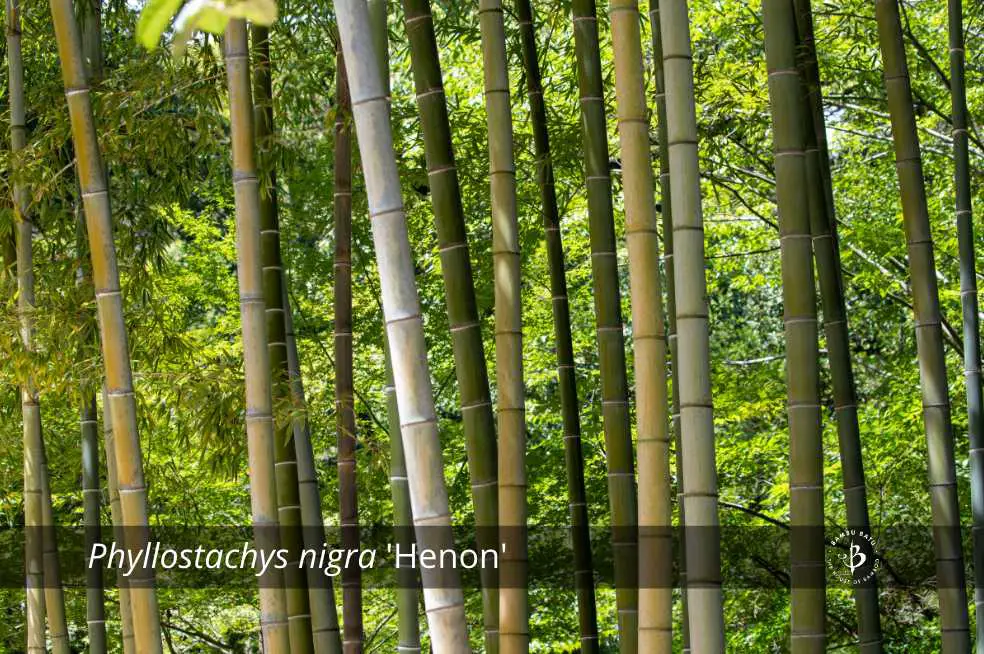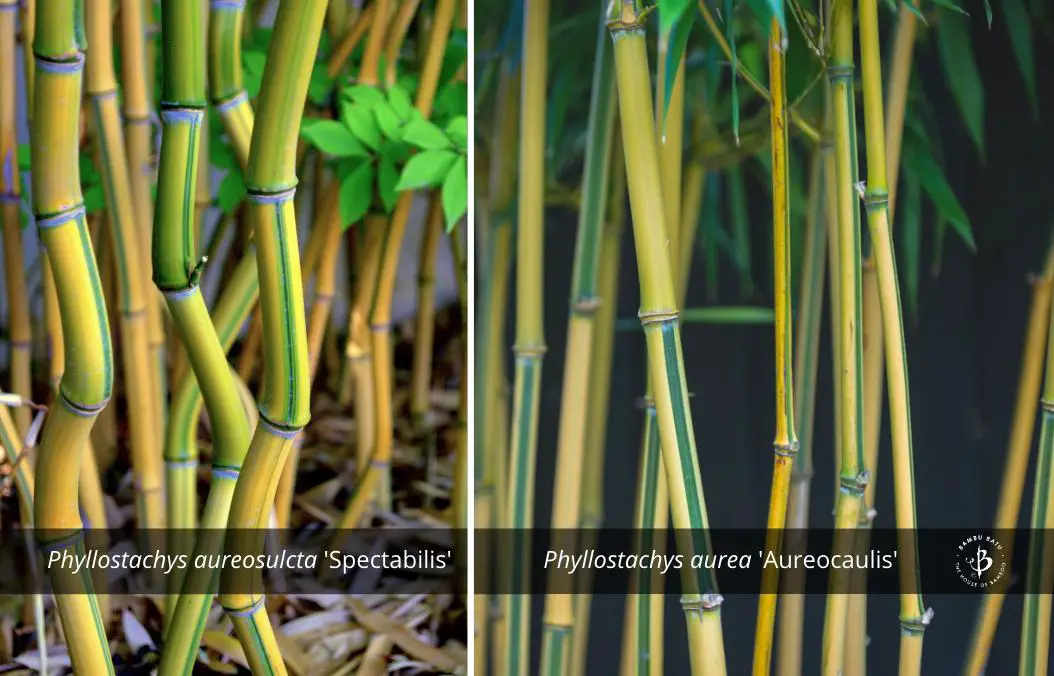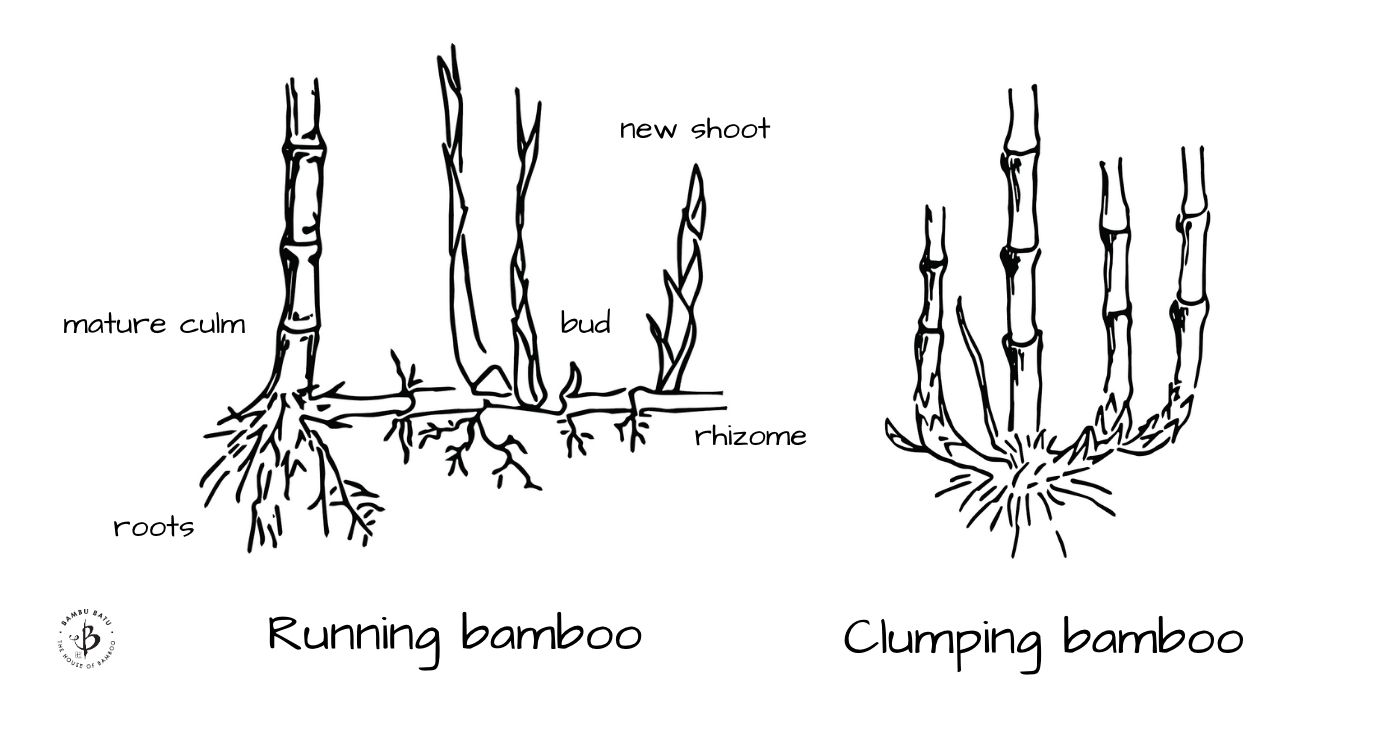When it comes to bamboo trivia, few questions are more frequently asked or more inconclusively debated. How many bamboo species are there?
Most authors and experts agree that there are approximately 1,500 species of bamboo. Occasionally, you may come across a claim with an extremely precise number, like 1,662 known species, or 1,718. But I put little faith in such exact figures. In truth, it’s not possible to count the exact numbers. Furthermore, there is a large and indefinite number of bamboo sub-species, or cultivars, which brings the total sum closer to 2,000.
If you want to go out counting bamboo species on your own, you probably won’t get too far. Visit the most expansive bamboo nurseries in Florida or Tennessee, and you’re unlikely to see more than 100 species in their collections. The lion’s share of varieties on that long list of 2,000 are rare and exotic specimens that might only be found in the deepest jungles of Central America or Latin America. To seriously tour the vast world of bamboo diversity, you’ll need to fetch your pith helmet and renew your passport.
Check out our directory of bamboo species for a comprehensive reference filled with links and photos.
Counting the total number of bamboo species in the natural world is a bit like counting the stars in the Milky Way or the angels on the head of a pin. For one thing, the number is impossibly too large to grasp. More importantly, the notion of speciation is a manmade classification without black-and-white delineation. Bamboo has been proliferating and evolving for thousands of years, and it is especially abundant in the tropical zones near the equator. Surveying these jungles is physically challenging. But the real challenge is to discern between intra- and inter-species differentiation.
Like you and me, every member of a given species has some degree of uniqueness. That’s called phenotypic variation. As populations spread out, they will continue to evolve and differentiate. Eventually, a new branch forms in the evolutionary tree, and you have a new species. But the thing about the evolutionary tree, it’s just a metaphor. You can’t actually hold a branch in your hand and say, “Here we have it, a new species!”
To make matters even more ambiguous, we also have bamboo cultivars or subspecies. When a botanist discovers a new variation, and can’t make up her mind whether it’s a new species or not, we have the comforting but ambivalent option to label it a subspecies. But one botanist’s cultivar could easily be another author’s brand-new branch on the tree.
Hey bamboo lovers! As someone who’s spent years researching and working with bamboo, I’m excited to share everything you need to know about the incredible diversity of bamboo species around the world. Let’s dive into this fascinating topic!
The Surprising Numbers Behind Bamboo Species
Would you believe that there are actually between 1400 to 1800 different bamboo species currently known to science? Pretty amazing, right? At Bamboo Research Institute, we’ve documented that these species belong to 91 different genera in the true grass family Poaceae.
Where Do All These Bamboo Species Grow?
The distribution of bamboo species across the globe is quite interesting:
- Southeast Asia: 64% of all species (the champion of bamboo diversity!)
- Latin America: 33% of species
- Africa and Oceania: Only 7% of species
- United States: Just 3 native species (river cane, switch cane, and hill cane)
- Europe: No native bamboo species (sorry, European friends!)
Main Types of Bamboo Growth Patterns
Bamboo species generally fall into two main categories:
1. Clumping Bamboo (Sympodial)
- Grows in tight, vase-shaped clumps
- Expands slowly outward
- Easy to contain and control
- Dominates tropical regions
- Examples: Bambusa and Dendrocalamus species
2. Running Bamboo (Monopodial)
- Spreads through underground rhizomes
- Can be quite aggressive
- Needs containment measures
- Common in temperate zones
- Examples: Phyllostachys species
Most Notable Bamboo Genera
Here are some of the most important bamboo genera you should know about:
-
Bambusa
- Tropical bamboo species
- Usually multiple branches
- New shoots appear in late fall
- Popular varieties: Bambusa vulgaris, Bambusa oldhamii
-
Dendrocalamus
- Giant tropical bamboos
- Some can reach over 100 feet tall
- Thick culms up to 12 inches diameter
- Example: Dendrocalamus giganteus
-
Phyllostachys
- Most common in temperate regions
- Running growth habit
- Includes many ornamental varieties
- Popular species: Phyllostachys aurea, Phyllostachys nigra
Climate Adaptations
Bamboo species have adapted to various climates
Temperate Bamboo
- Survives cold down to 0°F (-18°C)
- Grows in USDA Hardiness Zones 4-7
- Good for continental US gardens
- Usually running types
Tropical Bamboo
- Needs temps above 30°F (-1°C)
- Thrives in USDA Zone 9+
- Perfect for Florida & Southern California
- Typically clumping types
Fun Facts About Bamboo Species
Did ya know?
- Bamboo evolved 30-40 million years ago
- The tallest species can grow over 100 feet high
- Some species flower only once every 120 years!
- There’s even a bamboo species that’s square (Chimonobambusa quadrangularis)
Conservation Status
We can’t talk about bamboo species without mentioning conservation. Some challenges include:
- Habitat loss in native regions
- Over-harvesting of certain species
- Limited documentation of rare species
- Need for better germplasm preservation
Practical Applications
Different bamboo species serve various purposes:
| Use | Common Species |
|---|---|
| Construction | Guadua angustifolia, Bambusa balcooa |
| Food (shoots) | Dendrocalamus asper, Phyllostachys edulis |
| Ornamental | Bambusa multiplex, Phyllostachys aurea |
| Paper making | Bambusa balcooa, Dendrocalamus strictus |
Growing Tips for Different Species
If you’re thinking about growing bamboo, here’s what to consider:
- Know your climate zone
- Understand the growth habit (running vs clumping)
- Research mature size
- Consider available space
- Check local regulations (some areas restrict certain species)
With over 1,400 species and counting, bamboo truly is one of nature’s most diverse and versatile plants. Whether you’re a gardener, builder, or just someone who loves sustainable materials, there’s definitely a bamboo species out there for you!
Remember, this amazing grass family continues to surprise us – researchers are still discovering new species! So next time someone asks you “how many bamboo species are there?” you can tell them it’s a growing number that currently stands around 1,400-1,800 species.
Want to learn more? Drop a comment below or check out our other bamboo articles. We’re always happy to share our bamboo knowledge with fellow enthusiasts!

Examples of blurry bamboo distinctions
Among the 90 to 115 genera of bamboo (another debatable number), several have seen significant renaming and reordering in the last couple of decades. There are also a handful of bamboo species that have large numbers of cultivars, as well as diverse species that have not been subdivided.
The genus Arundinaria provides a perfect example of how bamboo classifications change and evolve. Today there are three species of running bamboo, all native to North America, which officially belong to this genus. In other words, the great majority of authors recognize only those three species as true Arundinarias.
In former times, however, this genus had as many as 400 species. The preponderance of those bamboos were eventually reclassified into different genera, including Bashania, Fargesia, Sasa, and others. These other genera all comprise temperate, cold-hardy bamboo. Oddly though, they are not all runners. Bashania and Fargesia make up some of the more unusual bamboo varieties which are temperate but clumping.
The geographic distribution of Arundianria is unique. These are the only three species of bamboo native to the contiguous United States. But in the older systems, Arundianria was spread all across Asia and even Africa.
While the genus Arundinaria was reduced to a perfect trio, Fargesia has had a very different history. By some measures, this odd collection includes more than 80 species of atypically cold-tolerant clumpers. They are primarily native to the slopes of the Himalayas, where they’ve adapted to the extreme climate. Other species are native to China and Vietnam.
For their cold-hardiness, Fargesia belongs to the tribe Arundinaceae. However, some experts would consider bamboos like these, as well as Borinda and Thamnocalamus, as tropical bamboo of the tribe Bambuseae.
When bamboo varieties manage to defy the basic boundaries of classification, what chances do we have of enumerating every species and tallying them up?
The genus Bambusa includes about 150 species, not including dozens of cultivars, making it one of the most extensive. And Bambua vulgaris is almost certainly the most widespread species of all.
The name means “common bamboo“, and this species of Chinese origin now grows all over the tropical world, thanks to the ambitious explorers and the scientific seafarers of the 18th and 19th centuries. With such a long history and wide geographic distribution, it’s not surprising to see Bambusa vulgaris producing a divergent array of offspring.
It’s well known that there is yellow vulgaris all over Latin America, and that the yellow and green vulgaris have both proliferated across Africa. But authors have yet to redefine these variants as separate species. Certain striped varieties of vulgaris, on the other hand, have earned recognition as a subspecies, usually referred to as ‘Vittata’ or Painted Bamboo.
This striped cultivar of
Vulgaris most likely originated in China. But farmers and ethnobotanists of northeast India may argue otherwise. This region, around the state of Assam, is teeming with native bamboo populations of all kinds.
The genus Phyllostachys is made up of all sorts of running bamboos, about 50 species in all, plus a panoply of subspecies. They are some of the most vigorous and fast-spreading of all bamboo. This can be a point of concern for many growers, but it has made them extremely successful and prolific.
Black bamboo, Phyllostachys nigra, is one of the most popular species of decorative bamboo, thanks to the striking, shiny black color of its slender culms. Who would guess that giant Henon bamboo, with culms over 50 feet tall and 4 inches thick would be a cultivar of this ebony ornamental?

Henon is a subspecies of Black Bamboo, but with grayish-green culms. It also goes by the common name Giant Gray Bamboo. It’s one of the best timber bamboo species to grow in North America. It’s hardy, fast-growing, and has thicker walls than most other Phyllostachys, making it more suitable for building and light construction.
Some other interesting Phyllostachys are the striped cultivars. P. aureosulcata ‘Spectabilis’ and P. aura ‘Aureocaulis’ are especially eye-catching. Their striping is similar, but ‘Spectabilis’ sometimes grows with an exotic zigzag. Again, these varieties are distinct in appearance, but not deemed worthy of speciation.

Discrepancies in bamboo classification
As bamboo awareness continues to increase, and plants and plant-lovers alike migrate around the world, the struggle to arrive at a standard system of naming and classification has intensified. From region to region, even island to island, bamboo species have their own local names. The same species of bamboo might be found in a different region but under a different moniker, and conversely, a similar common name could refer to an entirely different species.
At the same time, scientists and specialists go traveling the world, collecting more and more data. As the knowledge base expands, plants that were once held to be closely related can be re-classified into more separate categories. And, naturally, the opposite can also happen.
Sometimes a genus of bamboo will be broadened, as formerly unrelated specimens are consolidated together. In other cases, a genus gets reduced, while certain members get relisted elsewhere. It’s important to remember that Mother Nature does not draw clean lines between species and genera. These taxonomical groupings are completely manmade tools of convenience to help us find our way through the murkiness of the natural world.
Botanists and plant scientists define bamboo as a subfamily, Bambusoideae, within the grass family, Poaceae. And before we get to the genus or the species, which typically follow after the family, the bamboo subfamily is divided into three tribes.
Most people with any knowledge of bamboo are familiar with runners and clumpers, which make up the first two tribes of woody bamboo. A third tribe, known as Olyreae, consists of herbaceous or non-woody bamboo, soft, low-growing and primarily found in the shady understory of the Amazon rainforest.

But even though we can divide the many species of bamboo into temperate runners and tropical clumpers, it’s not always a perfectly clear distinction. Botanically speaking, bamboo has two types of rhizome systems, either pachymorph (clumping) or leptomorph (running). But some running types run pretty slowly. And some clumping bamboo tends to spread out; we call those open clumpers.
If experts – and nature herself – can’t even agree on this fundamental distinction, you can imagine how hard it will be to draw sharp lines between the species.
Choosing a bamboo variety | Volunteer Gardener
FAQ
How many species of bamboo exist?
The woody bamboos do not form a monophyletic group; instead, the tropical woody and herbaceous bamboos are sister to the temperate woody bamboos. Altogether, more than 1,400 species are placed in 115 genera.
What is the most valuable bamboo to grow?
Moso bamboo is a great choice for farming because it grows quickly and has a high yield. Sasa bamboo is also a good choice because it is resistant to pests and diseases. Phyllostachys bamboo is a hardy bamboo species that can survive in cold climates.
Does all bamboo take 5 years to grow?
Many species of bamboo mature in four to eight years; once plants reach maturity, they can be sustainably harvested as a perennial crop for 40+ years. Because only the aboveground parts are harvested, there is less soil disturbance, which helps maintain stability.
How many types of bamboo plants are there?
In the tribe Bambuseae, also known as bamboo, there are 91 genera and over 1,000 species. The size of bamboo varies from small annuals to giant timber bamboo.
How many types of bamboo are there?
Since 1981 the American Bamboo Society (ABS) has compiled an annual Source List of bamboo plants and products. The List includes more than 490 kinds (species, subspecies, varieties, and cultivars) of bamboo available in the US and Canada, and many bamboo-related products. The ABS produces the Source List as a public service.
How many types of bamboo grow in America?
In America, there are only three species of bamboo that grow naturally. These three species once covered nearly five million acres of land in America, until settlers began to tear down this “Cane Break” for farming lands. Any other species of bamboo that grow in North America are generally those that have been transplanted from other places.
Is bamboo a genus?
Botanists and plant scientists define bamboo as a subfamily, Bambusoideae, within the grass family, Poaceae. And before we get to the genus or the species, which typically follow after the family, the bamboo subfamily is divided into three tribes. Where does bamboo grow naturally?
How many types of bamboo can you grow in your garden?
Here are 15 types of bamboo to grow in your garden. Tortoiseshell Bamboo (Phyllostachys edulis var. heterocycla) is called Kikkou-chiku in Japan and is used in traditional crafts including floor pillars and flower vases. The rare bamboo can reach up to four inches wide with the nodes most prominent at the base of the plant.
How many species of running bamboo are there?
Today there are three species of running bamboo, all native to North America, which officially belong to this genus. In other words, the great majority of authors recognize only those three species as true Arundinarias. In former times, however, this genus had as many as 400 species.
Where does bamboo grow naturally?
Of the many kinds of species of bamboo out there, 64% of the varieties of bamboo growing naturally do so within the Southeast Asia regions. 33% of the species grow naturally in Latin America, and the last 7%, give or take a few species, grow in the Africa and Oceana regions of the world.
